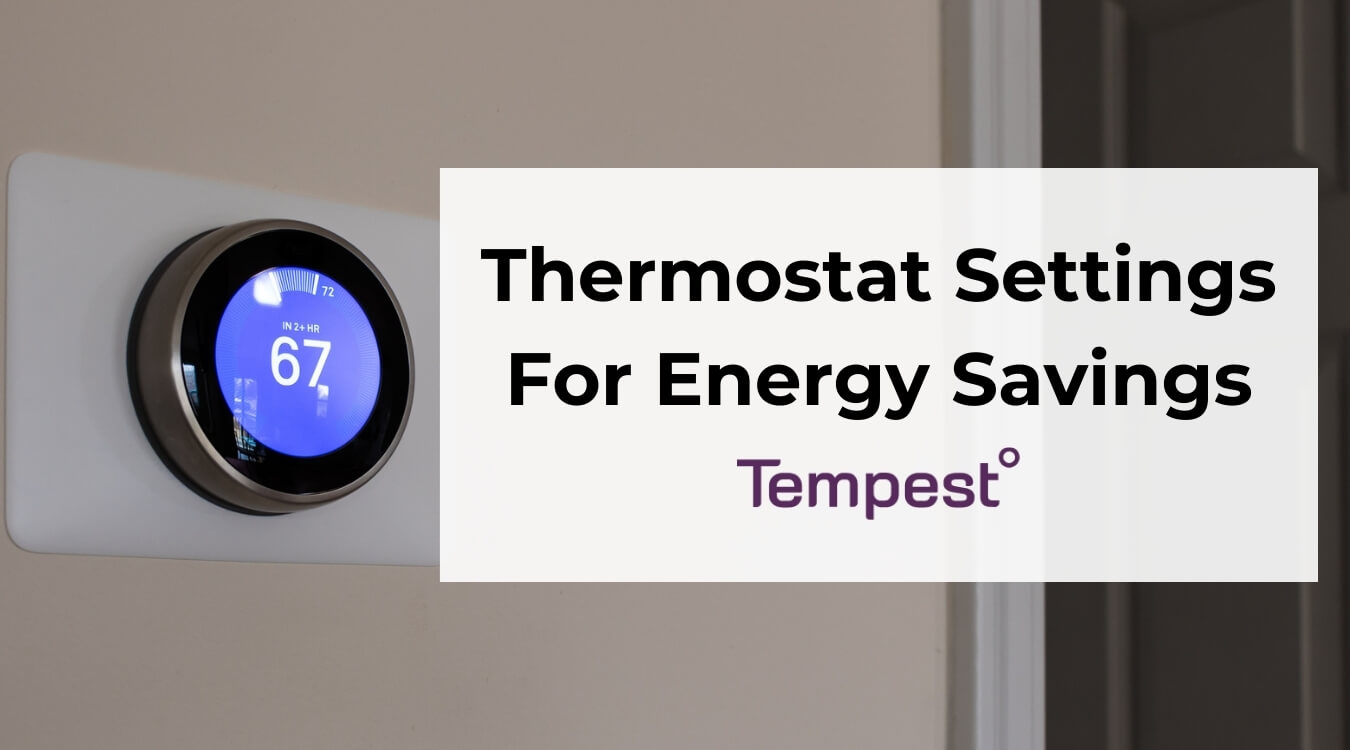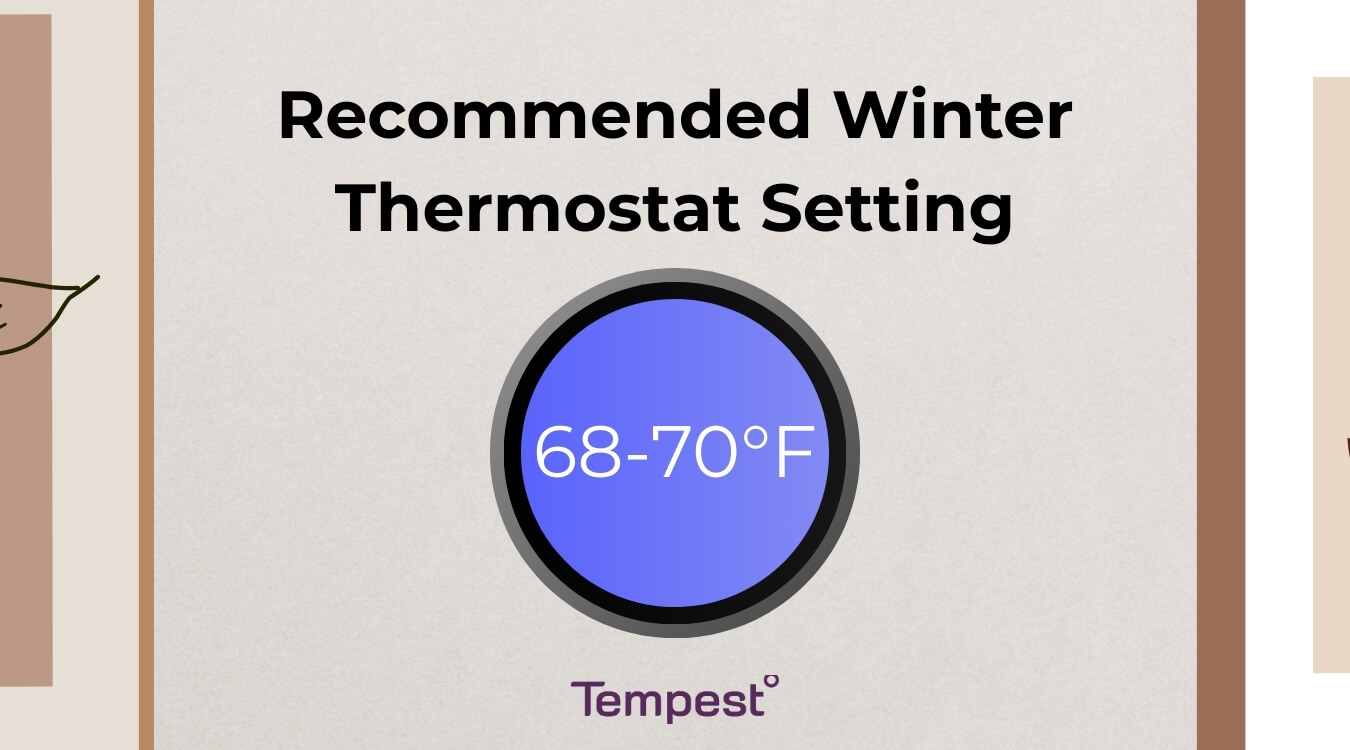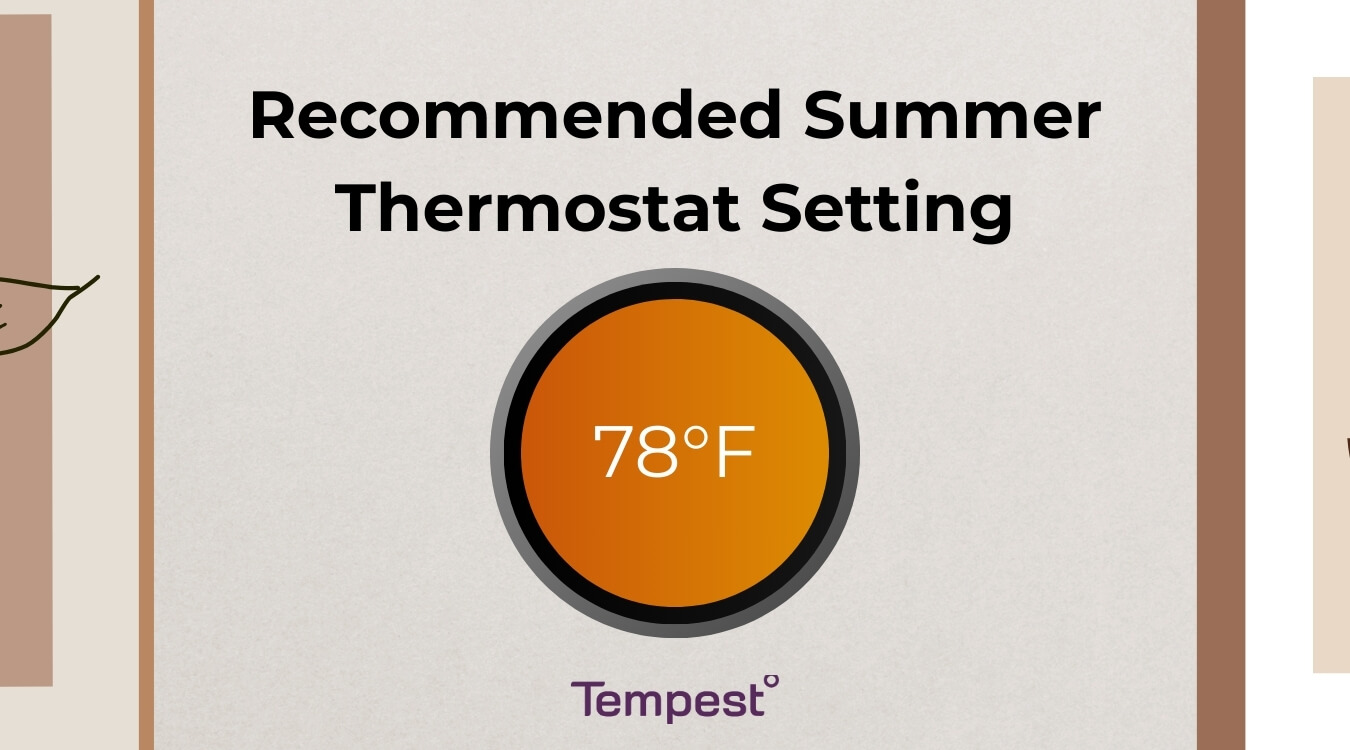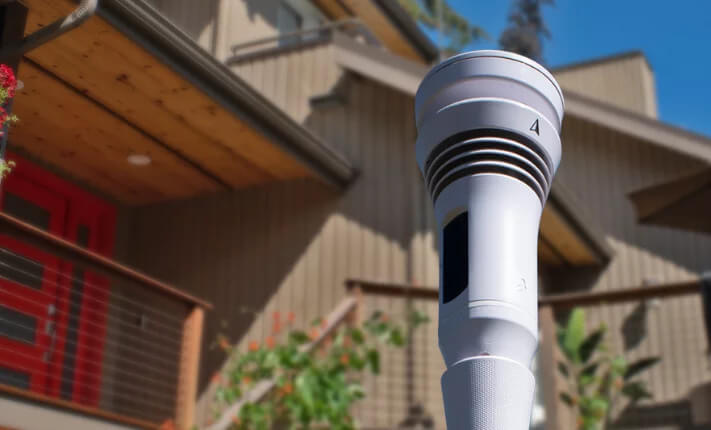
Utility bills often spike during summer and winter, and that usually comes down to how you heat or cool your home. So, what are the recommended thermostat settings for summer and winter that can help lower those bills without sacrificing comfort?
While using a fan or space heater might offer temporary relief, these are temporary solutions. They’re not designed to maintain a steady, comfortable environment, especially when outside temperatures swing to extremes. Your thermostat remains the most reliable tool for temperature control. Knowing what to set your thermostat to in winter and summer can make a major difference in energy savings.
- What To Set Thermostat To In Winter
- What To Set Thermostat To In Summer
- Ideal House Temperatures
- Energy Efficient Thermostat Settings
The Tempest Weather System delivers real-time, hyperlocal weather updates straight to your phone, giving you the data you need to fine-tune your thermostat settings based on actual conditions outside.

What To Set Thermostat To In Winter
When temperatures drop, it’s tempting to crank the heat on your winter thermostat settings and bundle up indoors. However, to balance comfort and energy efficiency, the U.S. Department of Energy recommends setting your thermostat to 68°F to 70°F during winter days when you’re home. This is widely considered the best thermostat setting for winter.
If you’re leaving the house for a few hours, lowering the temperature by a few degrees (anywhere between 58°F and 61°F) can cut energy usage. That’s because the cooler your home is, the slower it loses heat, reducing the work your system has to do.
So, when asking what should I set my thermostat to in the winter, the short answer is: keep it at 68°F when you’re home and awake, and lower it a bit while you’re sleeping or away.
What To Set Thermostat To In Summer
Finding the ideal summer thermostat setting can be tricky, especially during a heatwave. Experts generally agree that 78°F is the most energy-efficient setting for staying cool indoors without overloading your system or your wallet.
When you’re not home, consider raising the thermostat to 85°F or higher. This ensures your AC isn’t running unnecessarily, while still keeping your home from becoming unbearably hot.
Learn about when it’s too hot or too cold to be outside in our guides.
Ideal House Temperatures
The ideal indoor temp varies slightly depending on the person, the season, and even the time of day. That said, most people feel comfortable with indoor temperatures ranging from 65°F to 78°F, depending on the weather outside. But comfort isn’t the only factor to consider. In some situations, you need to adjust your thermostat with more care.
Best Temperature For Sleeping
The ideal house temperature for sleep falls between 60°F and 67°F, according to the Cleveland Clinic. That’s easy enough to achieve in cooler months. In summer, however, you may want to adjust your thermostat at night to something cooler, even if it means a minor bump in energy use. Fortunately, most areas cool off after sunset, which can help offset the cost.
Best Temperature For Pets
Your furry friends are often just as sensitive to temperature swings as you are. Most cats and dogs are comfortable between 65°F and 78°F, but certain breeds may have different preferences. If you’re unsure, consult with your veterinarian about your pet’s specific needs. Maintaining a consistent indoor temperature helps keep them safe and comfortable.
Best Temperature For Indoor Plants
Many indoor plants thrive within the same temperature range that humans do. The energy-efficient range of 65°F to 78°F works well for most greenery. Be sure to avoid exposing your plants to temperatures below 50°F, as that can stunt their growth or even kill them. Keep them away from direct drafts and heaters for best results.
Best Temperature For Infants
Babies are more sensitive to fluctuations in temperature. WebMD recommends a thermostat setting between 68°F and 72°F for infants, especially in their first few months. Once your baby reaches about 11 weeks, they can start regulating their body temperature more effectively, but maintaining a consistent temperature is still important.
Confused about what the difference is between temperature and feels-like temperature? Discover the difference in our blog.
Energy Efficient Thermostat Settings
Adjusting your thermostat manually works, but it’s not always convenient. A programmable thermostat makes it much easier to follow a thermostat schedule that improves energy efficiency while maintaining comfort.
You can program your smart thermostat to change automatically based on the time of day, whether you’re home, asleep, or away. This kind of automation ensures that your home is only being heated or cooled when necessary, reducing energy waste.
Best Thermostat Schedule
Here’s a sample thermostat schedule that supports both comfort and savings:
Winter:
- Awake: 68°F
- Sleeping: 60°F
- Away from home: 58°F to 61°F
Summer:
- Awake: 78°F
- Sleeping: 74°F to 78°F
- Away from home: 85°F to 88°F
Adjusting the temperature by just 7 to 10 degrees for 8 hours a day can lead to savings of up to 10% a year on heating and cooling. This approach to energy-efficient thermostat settings not only helps the environment but also cuts your monthly expenses.
Get Accurate Outdoor Temperature Readings With The Tempest Weather System
Knowing the exact conditions outside your home can make a big difference when deciding what to set the thermostat to in summer or winter. That’s where the Tempest Weather System comes in. It provides live, local temperature data that helps you decide what temperature to set your thermostat to.
Unlike apps that pull data from distant weather stations, Tempest pulls readings from your actual location – right in your backyard. That means your thermostat decisions are based on the weather you’re experiencing, not general estimates. Buy one today!


